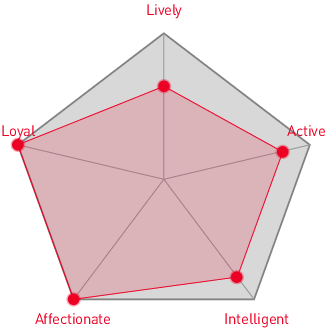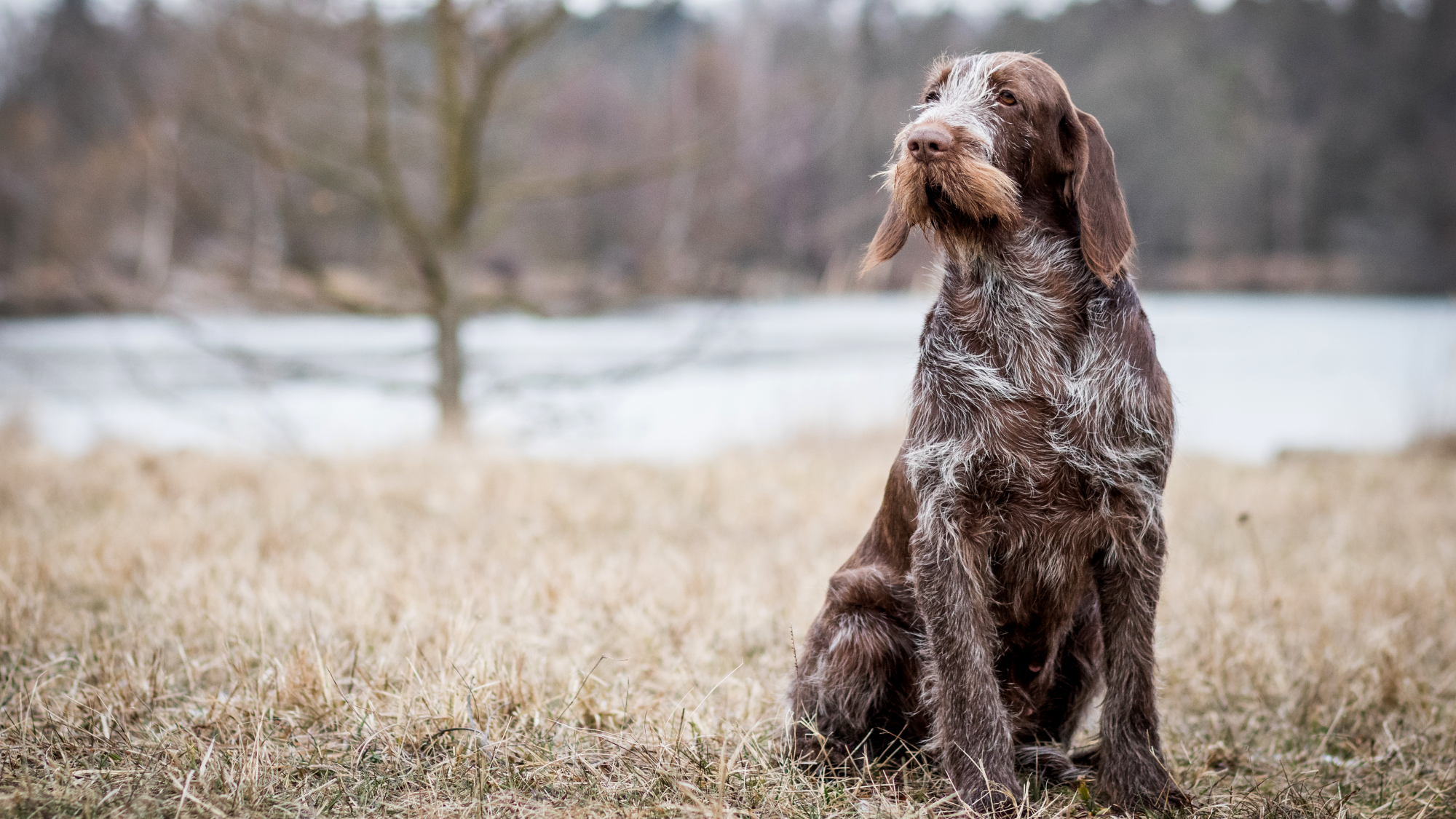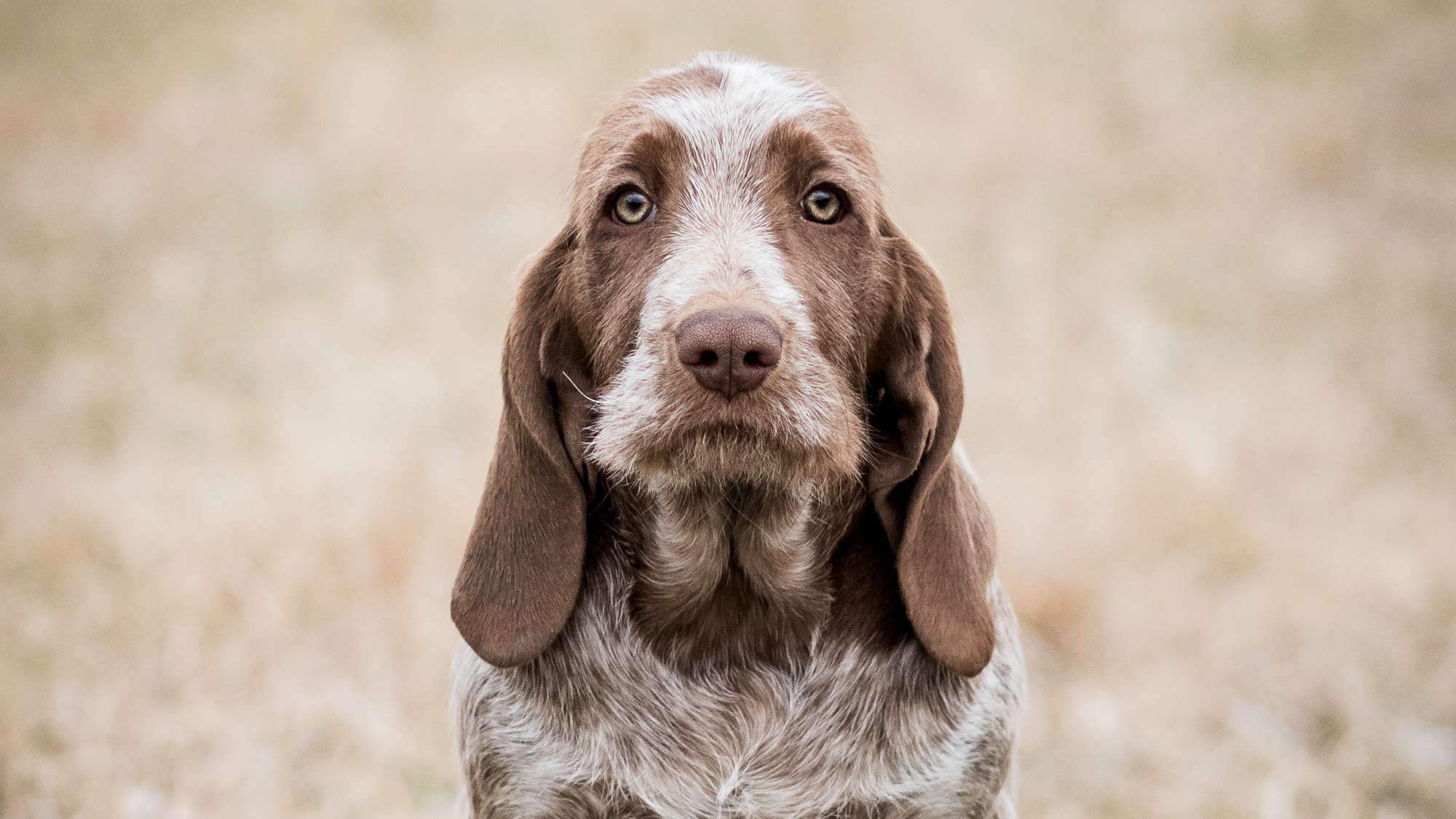
Let's talk Italian Spinone Dogs
A gentle grizzly giant of a dog, the wirehaired and whiskery Italian Spinone, though originally bred for hunting, is today not averse to a few home comforts. Canines of this size and power need plenty of exercise of course, but provided they get it, Italian Spinone dogs are quite content to while away the hours curled up in the warm close to their beloved humans. These beautiful dogs, which are much-loved in their native Italy, form strong bonds with their humans and make devoted canine companions.
Official name: Italian Spinone
Other names: Spinone Italiano, Italian Griffon, Italian Wirehaired Pointer

| Drooling tendencies |  |
Warm weather? |  |
| Shedding level |  |
Suited to apartment living? |  |
| *Energy Level | moderate | *Friendly pet? |  |
| Compatibility with other pets |  |
*Can stay alone? |  |
* We advise against leaving pets alone for long stretches. Companionship can prevent emotional distress and destructive behavior. Speak to your veterinarian for recommendations.
Every pet is different, even within a breed; this snapshot of this breed specifics should be taken as an indication.
For a happy healthy and well-behaved pet, we recommend educating and socializing your pet as well as covering their basic welfare needs (and their social and behavioral needs).
Pets should never be left unsupervised with a child.
Contact your breeder or veterinarian for further advice.


| Baby age | Birth to 2 months |
| Puppy age | 2 to 15 months |
| Adult age | 15 months to 5 years |
| Mature age | 5 to 8 years |
| Senior age | From 8 years |
1/7
Get to know the Italian Spinone
All you need to know about the breed
Italian Spinone dogs were developed for the hunt – thick, spiky undergrowth, icy waters, long distances – none of this can faze such a hardy and versatile dog. Their thick wiry coats, not to mention their jauntily tufted eyebrow ridges and beards, help protect them from rough terrain.
But nowadays these naturally outdoorsy dogs also turn their paws to more peaceful pursuits, such as playing fetching games with their humans, or snoozing by the fire. These wonderfully wiry dogs are gentle and loyal, and form strong bonds with their people. Once trained they get on well with children, although of course like other breeds should not be left alone with them.
Italian Spinone dogs do need plenty of exercise – and if that exercise is off the lead, it should be in a safely enclosed space. Their prey drive is strong. While they get on pretty well with other dogs, these are not suitable additions to households including guinea pigs, hamsters or other small pets, which, thanks to their hunting history the Italian Spinone may chase.
2/7
2 facts about Italian Spinone Dogs
1. Artists’ muse
The ancestors of the Italian Spinone breed have been depicted numerous times in various works of art, dating back to the Middle Ages. The most famous example is Andrea Mantegna’s fresco in the Palazzo Ducale in Mantua.
2. Thorny issue
“Spina” means “thorn” in Italian and the Italian Spinone breed’s name may refer to the hardy coat that protected these resilient dogs from the scrapes and spikes of the undergrowth as they tracked and retrieved for their human companions.
History of the breed
If the Italian Spinone breed looks like something straight out of a tapestry hanging on the walls of a Medieval castle – the trusty hound and his noble masters, braving the impenetrable and mysterious forest for the hunt – that’s not really surprising. These dogs’ lineage dates back many hundreds of years and their (probable) griffon, setter and hound ancestors most likely did fulfil exactly that role.
Italian Spinone dogs have long been prized for their versatility, their keen noses (meaning they excel at tracking and pointing as well as retrieving), their strength and their stamina.
The Italian Spinone may have ancient credentials, but they are relatively little known outside their homeland of Italy. The breed was only recognised by the American Kennel Club (AKC) in 2000.

4/7
From head to tail
Physical characteristics of Italian Spinone Dogs
1. Coat
Stiff wiry single-layer coat in white with orange or brown markings.
2. Ears
Solid skull, hairy muzzle, triangular-shaped ears.
3. Body
Solid, muscular build with thick tail.

5/7
Things to look out for
From specific breed traits to a general health overview, here are some interesting facts about your Italian Spinone

6/7
Caring for your Italian Spinone
Grooming, training and exercise tips
Don’t be fooled by those charmingly tufty and tousled looks: Italian Spinone dogs do need some grooming – handstripping helps to remove the dead hairs from their wiry, single-layer coats, aiding the natural shedding process. A professional groomer can help with this if you don’t want to do it yourself. Your Italian Spinone’s teeth should also be brushed frequently (daily if possible) and their nails clipped regularly. As you would expect for a dog of their size, the Italian Spinone also needs a fair bit of exercise – this can take the form of nice long walks or chances to run around off the lead (in a securely enclosed space, as their prey drive is strong!). Italian Spinone dogs are intelligent but they can be a little stubborn, and don’t take well to harsh training methods (well, who does?) You will get good results if you adopt a gentle but firm and consistent approach. And remember, any food rewards need to come out of their daily food rations to avoid them putting on excess weight.
7/7
All about Italian Spinone Dogs
Italian Spinone dogs shed moderately – but your soft furnishings may still not be safe as they have a tendency to drag in leaves, twigs and other debris from the great outdoors, in their wiry coats.
Yes – they are gentle and affectionate, forming close bonds with their humans. They are also known to get on well with children, once trained, though like any other breed should not be left alone with them.
Read more on this topic


How to adopt a dog

Things to consider before getting a dog
Sources
1 - Veterinary Centers of America https://vcahospitals.com/
2 - Royal Canin Dog Encyclopaedia. Ed 2010 and 2020
3 - Banfield Pet Hospital https://www.banfield.com/
4 - Royal Canin BHN Product Book
5 - American Kennel Club https://www.akc.org/